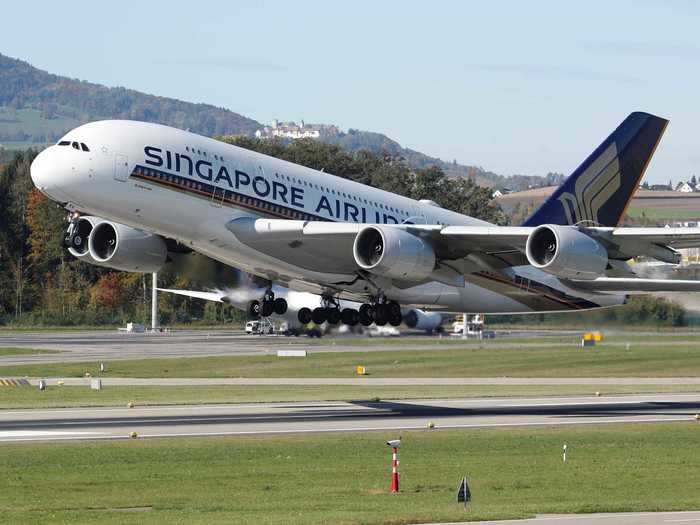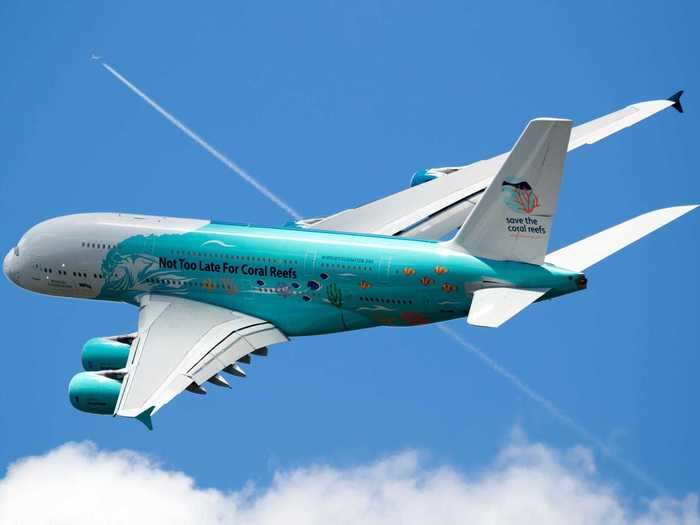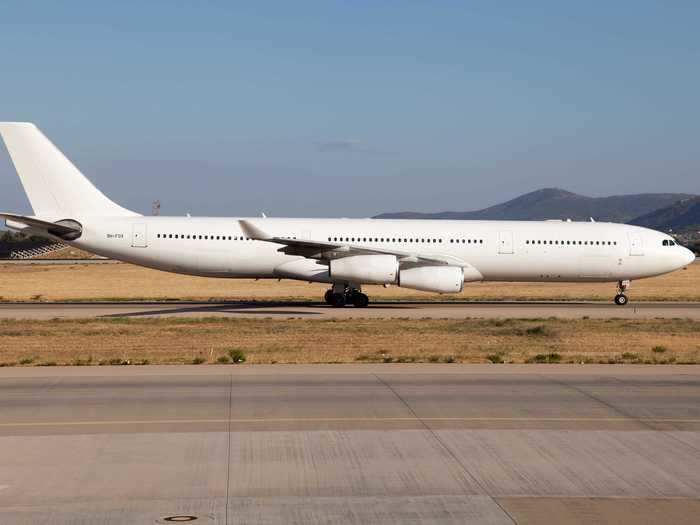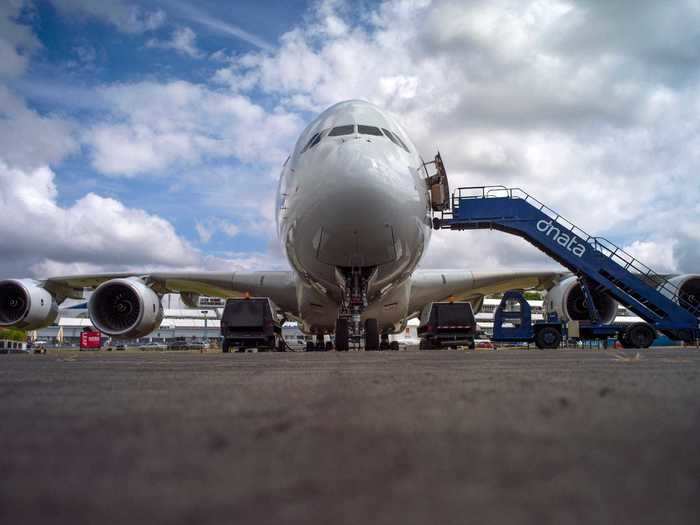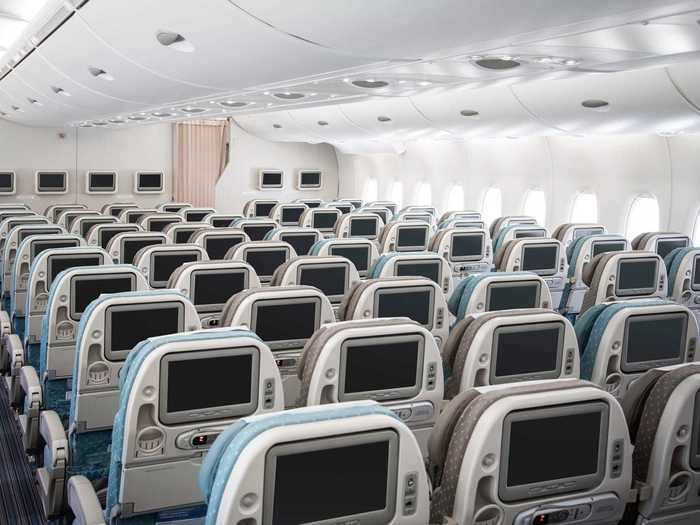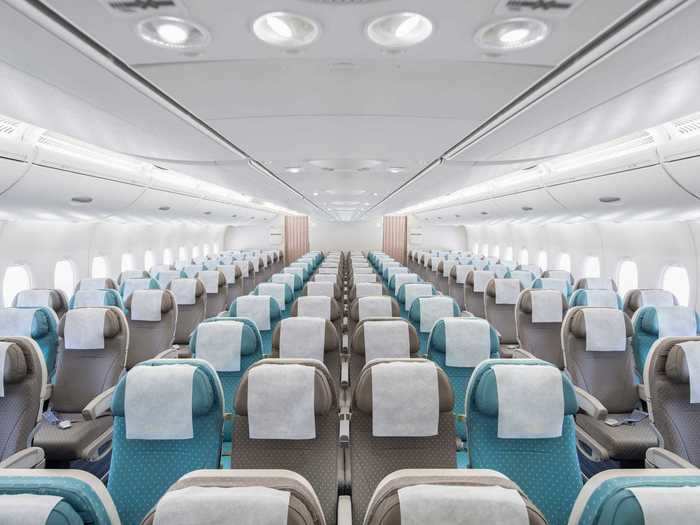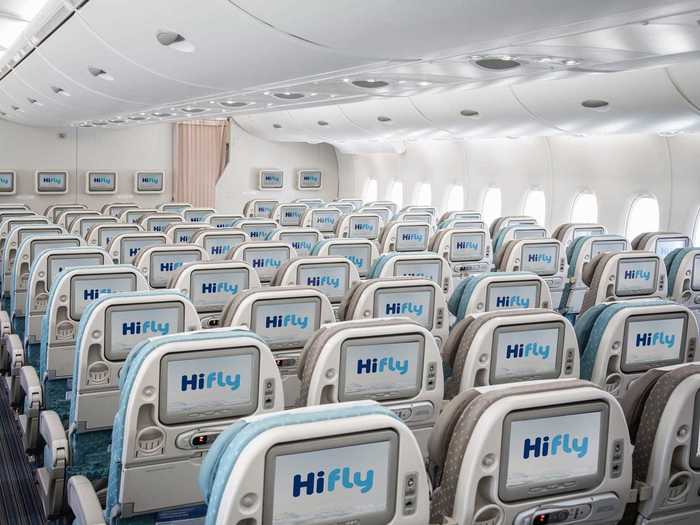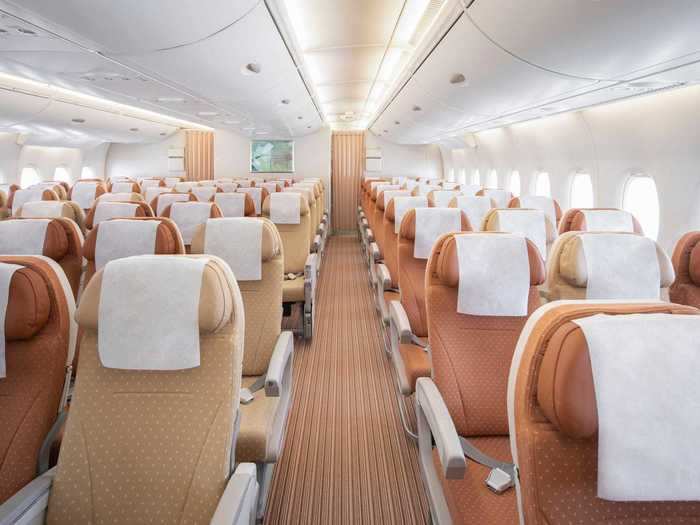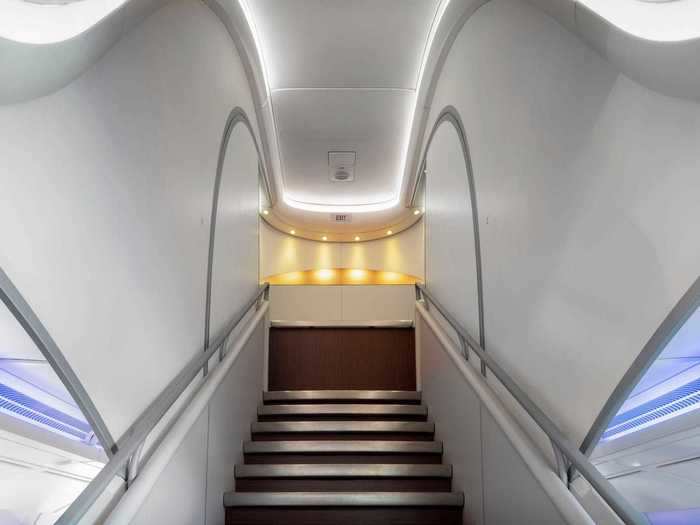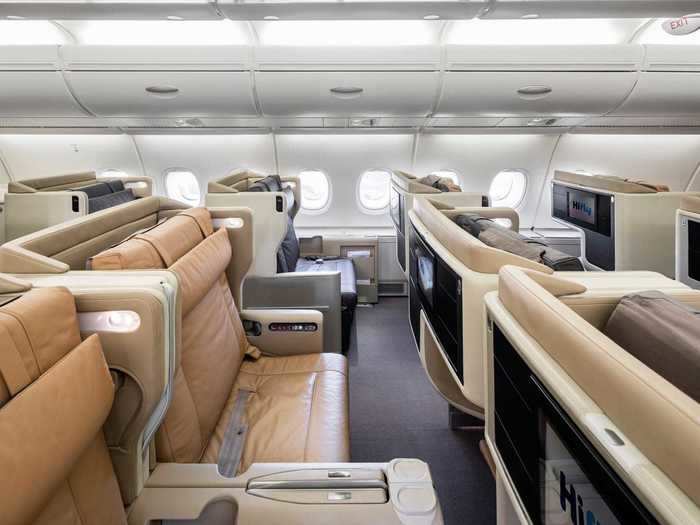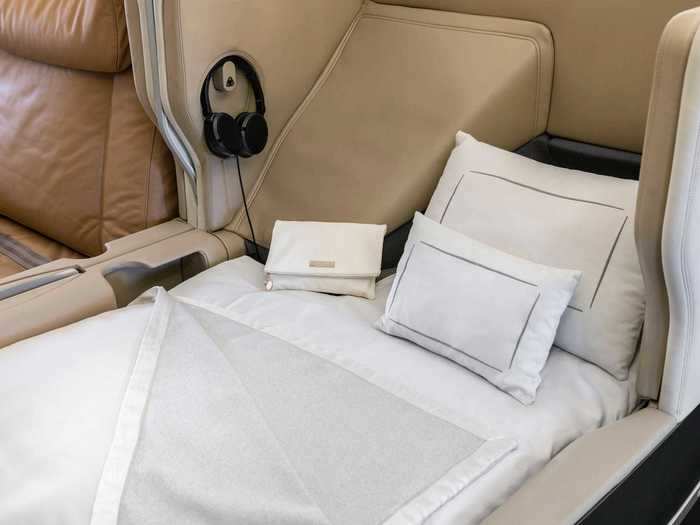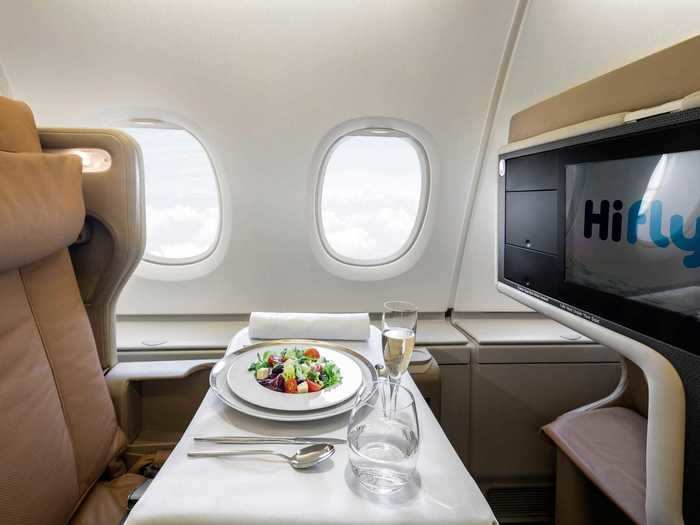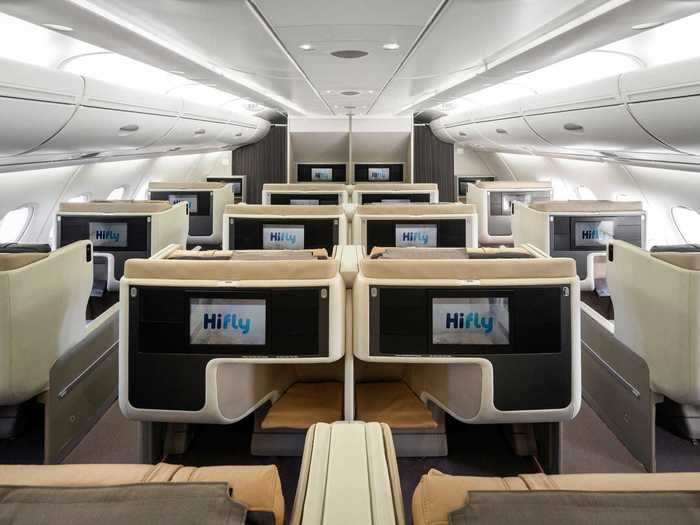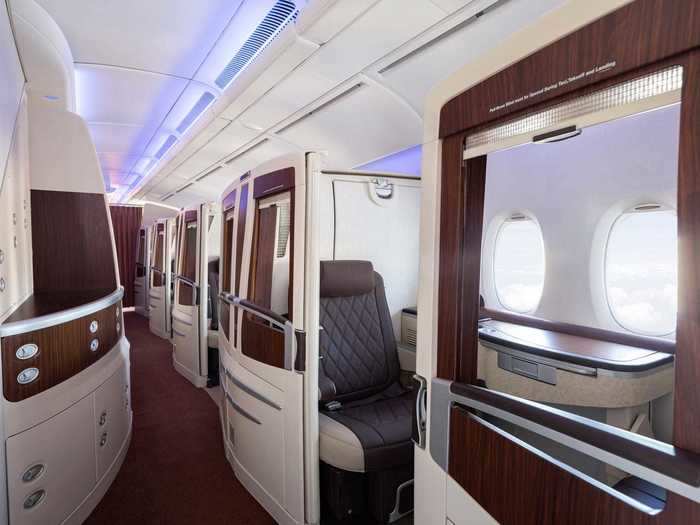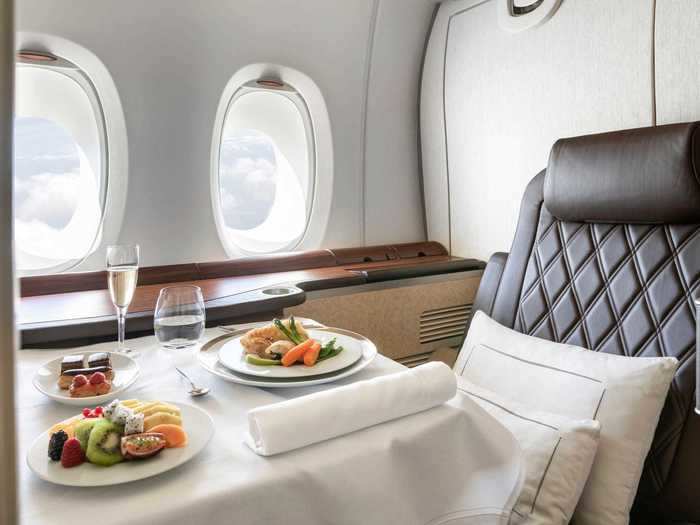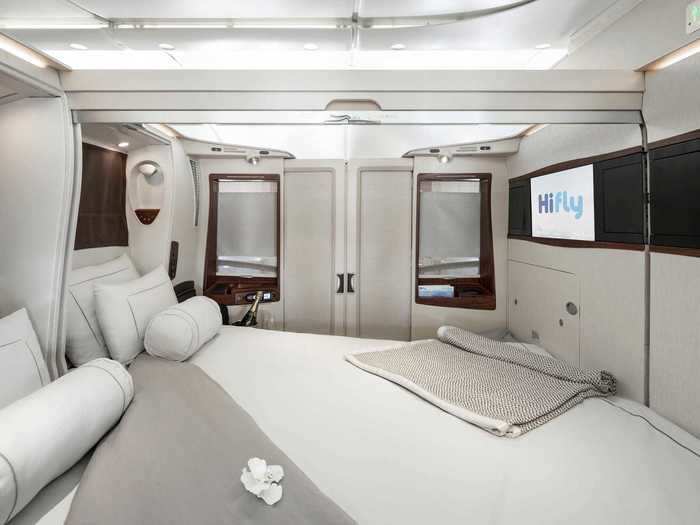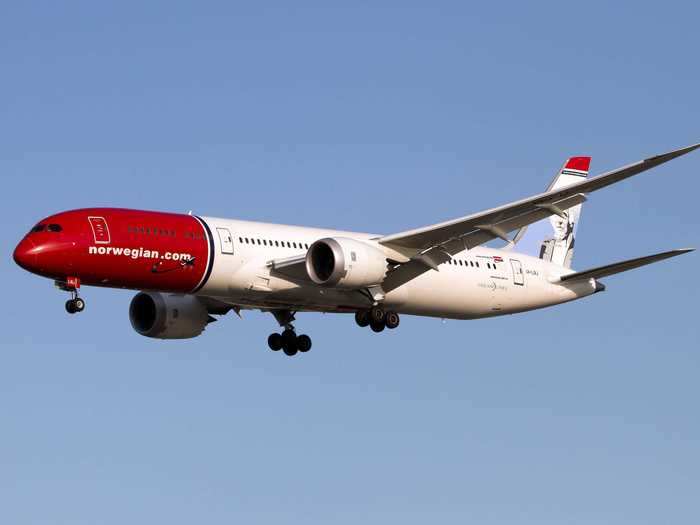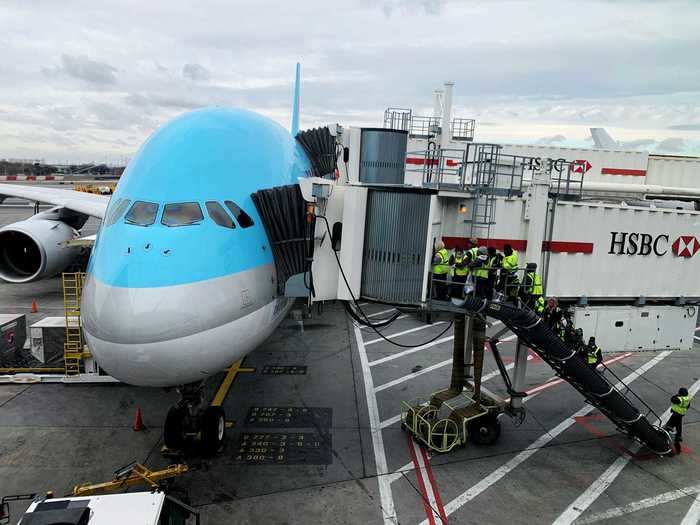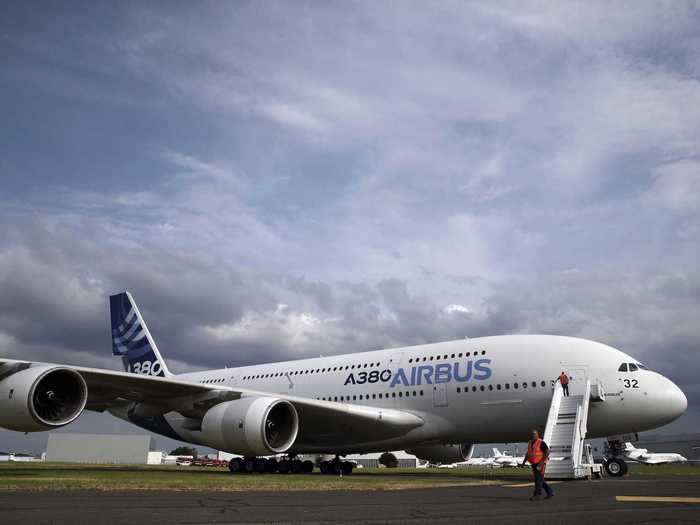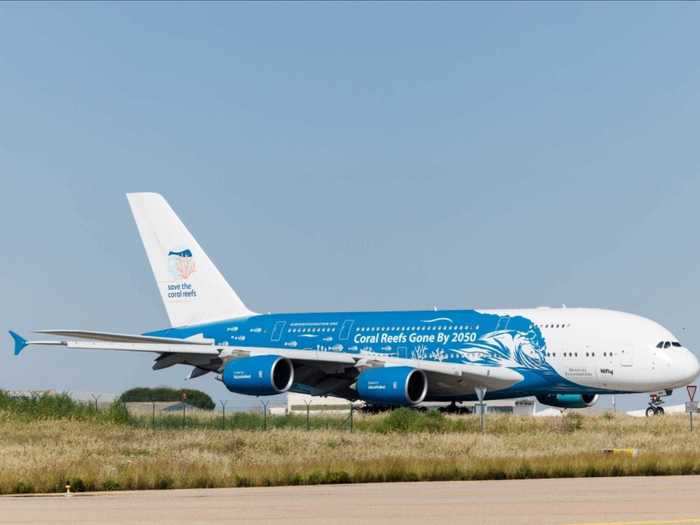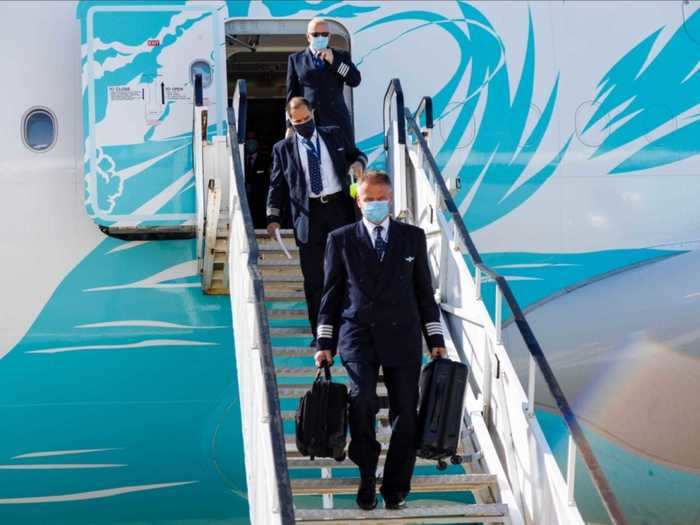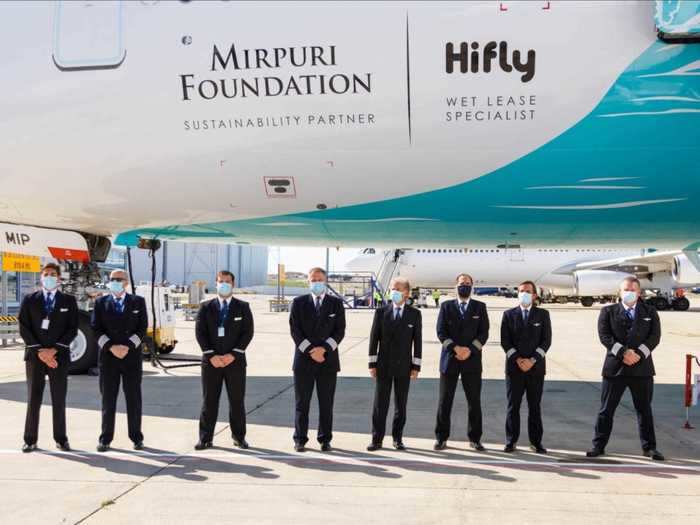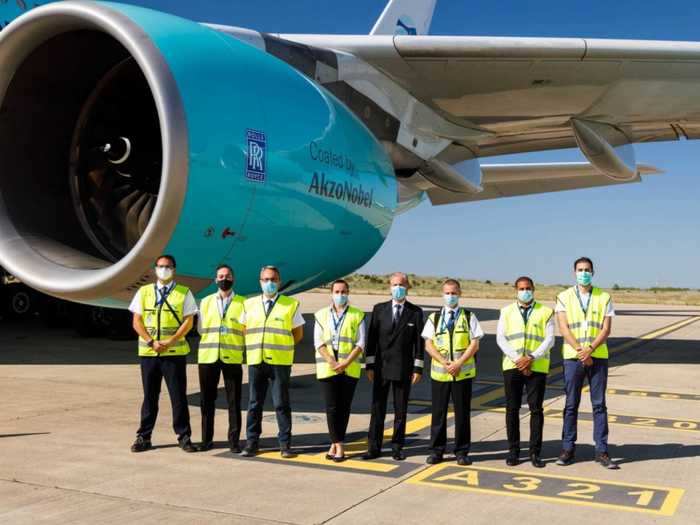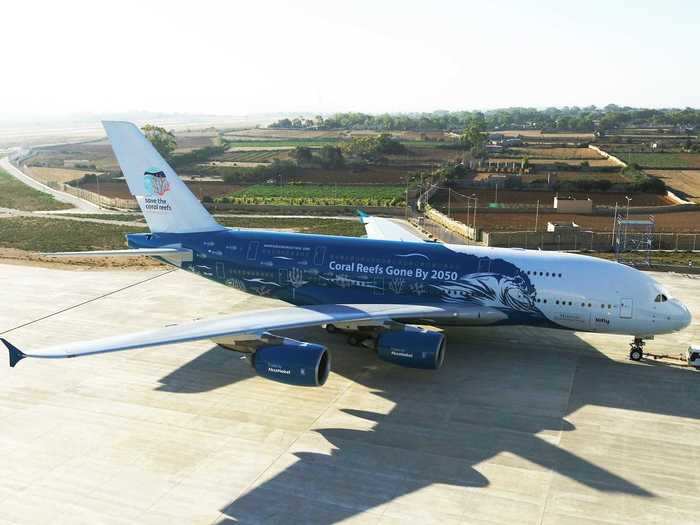A Hi Fly Airbus A380.VanderWolf Images / Shutterstock.com
- The Airbus A380 operated by Portuguese charter airline Hi Fly has returned to service to assist in humanitarian efforts related to COVID-19, flying an around-the-world trip earlier in May, the airline announced Monday.
- Hi Fly operates the only secondhand A380 which it uses for recovery, repatriation, and medical supply flights under its wet-lease and charter purview.
- The world's largest passenger jet, the A380 in Hi Fly's configuration seats nearly 500 passengers with amenities and features held over from its former owner, Singapore Airlines.
Portuguese airline Hi Fly's largest asset has once again taken to the skies, flying medical cargo as part of the global COVID-19 airlift, the airline announced on Monday.
As a charter airline, Hi Fly doesn't sell tickets or operate scheduled services. Rather, the airline steps in when the world's travel apparatus is in of assistance, whether it be a repatriation flight following an airline collapse or the transportation of medical supplies during a pandemic.
The only dedicated charter operator of an Airbus A380, the world's largest passenger plane complete with four engines and two full levels, Hi Fly is able to airlift over 400 people at a time making it invaluable during evacuation or repatriation scenarios.
The airline's past exploits with the A380 include assisting in the repatriation of British citizens when Thomas Cook Airlines collapsed leaving thousands trapped overseas and subbing in for Norwegian Long Haul's Boeing 787 Dreamliner on the New York-London route.
While participating early in the pandemic flying a handful of evacuation flights from China, the A380 was briefly grounded before the outbreaks in Europe and North America for maintenance in Beja, Portugal. The aircraft is now back in action and just completed a four-day trip literally around the world flying medical supplies.
Take a look inside the massive Airbus A380 available for charter by Hi Fly.
Read the original article on
Business Insider
Hi Fly became the first secondhand operator of an A380, taking delivery of the superjumbo in 2018 after Singapore Airlines opted not to continue with the plane.
A Singapore Airlines Airbus A380 aircraft.
Reuters
Instead of the standard white Hi Fly uses for its aircraft, the charter carrier opted to paint its new A380 in a special under-the-sea livery to spread a call to action: "save the coral reefs."
A Hi Fly Airbus A380.
VanderWolf Images / Shutterstock.com
When the A380 joined the fleet, it replaced Hi Fly's Airbus A340 for the largest of the airline's planes. While the A380 was in maintenance, the A340 was used to fly from Lisbon, Portugal to Shanghai, China to pick up medical supplies and personal protective equipment, Hi Fly told Business Insider.
A Hi Fly Airbus A340-300.
Fabrizio Gandolfo/SOPA Images/LightRocket/Getty
Before it was grounded for maintenance, the French government chartered the A380 twice to fly to deliver medical equipment to China and evacuate citizens from Wuhan, ground zero for the novel coronavirus.
REUTERS/Kieran Doherty
As the world's largest passenger jet, the A380 is ideal for evacuation or repatriation flights as it has 471 seats across three cabins: economy, business, and first.
Inside a Hi Fly Airbus A380.
HiFly
The lower level of the A380 holds the majority of the seats, with the economy class configured in a standard 3-4-3 configuration and a 12-seat first-class section in the first four rows.
Inside a Hi Fly Airbus A380.
HiFly
As the aircraft was formerly operated by Singapore Airlines, known for its lavish amenities and onboard product, seats feature in-flight entertainment systems and in-seat power.
Inside a Hi Fly Airbus A380.
HiFly
Hi Fly also maintained most of the Singapore Airlines look as seen with the stylish interior. Economy seats can also be found on the upper level, divided between economy and business to maximize capacity, and feature a generous 32 inches of legroom
Inside a Hi Fly Airbus A380.
HiFly
First-class and economy class are on the lower level while business class and a small section of economy class can be found on the upper deck, a short trip up the stairs.
Inside a Hi Fly Airbus A380.
HiFly
The business class section features 60 seats in a 1-2-1 configuration offering direct aisle access.
Inside a Hi Fly Airbus A380.
HiFly
The seats are the same plush seats found on Singapore Airlines and include fully lie-flat capabilities.
Inside a Hi Fly Airbus A380.
HiFly
In-flight entertainment is provided via massive screens controllable by touch or remote.
Inside a Hi Fly Airbus A380.
HiFly
The seats aren't ideal for density on repatriation flights but do offer a premium cabin when recovering for an airline.
Inside a Hi Fly Airbus A380.
HiFly
The most unique holdover from Singapore Airlines, however, is the opulent first-class section on the lower deck.
Inside a Hi Fly Airbus A380.
HiFly
The A380 comes with 12 extravagant first-class suites complete with lie-flat seats and closeable doors for privacy.
Inside a Hi Fly Airbus A380.
HiFly
The highlight of the cabin is the joinable suites where a double bed can be made, ideal for couples traveling together.
Inside a Hi Fly Airbus A380.
HiFly
The A380 isn't for every mission, as Norwegian Air found when it used the aircraft to cover its New York-London route instead of its usual Boeing 787 Dreamliner.
A Norwegian Boeing 787 Dreamliner.
Fabrizio Gandolfo/SOPA Images/LightRocket/Getty
Terminal 1 at New York's John F. Kennedy International Airport couldn't handle another A380, as it already sees multiple superjumbos from Lufthansa, Air France, and Korean Air. Delays were averaging four hours during the aircraft's tenure.
A Korean Air Airbus A380 at JFK Airport's Terminal 1.
Kate Taylor/Business Insider
When it comes to airlifting the greatest number of people home after being stranded, however, there is no better plane in terms of capacity and comfort than the A380. Airport permitting, of course.
An Airbus A380 aircraft.
REUTERS/Pascal Rossignol
One of its first missions back involved flying from Tianjin, China to Santo Domingo, Dominican Republic, to transport medical supplies to the island nation.
A Hi Fly Airbus A380.
Hi Fly
From its base in Beja, the A380 flew east to China and then continued east to the Dominican Republic and eventually back to Portugal, circumnavigating the globe in four days.
A Hi Fly Airbus A380.
Hi Fly
The mission began on May 14 and ended on May 18 with nearly 34 hours and 20,000 miles of flying completed during the two-stop trip.
A Hi Fly Airbus A380.
Hi Fly
The longest sector was between Tianjin and Santo Domingo, a near-7,500-nautical mile sector that took just over 16 hours to fly.
A Hi Fly Airbus A380.
Hi Fly
The Super Jumbo is now back in Portugal, awaiting its next mission.
A Hi Fly Airbus A380.
HiFly Press Kit

